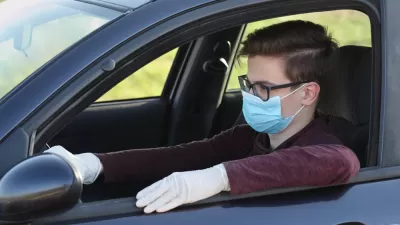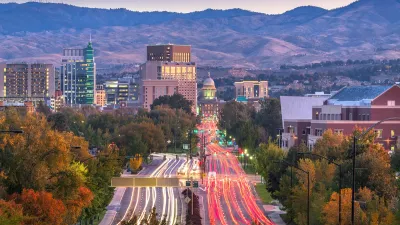Forget congestion pricing and higher gas taxes -- accurately priced pay-as-you-go auto insurance might be the best financial incentive tool for encouraging people to change their driving habits.
"Americans drive too much. This isn't a political or moral argument; it's an economic one..."
"[W]ith roughly three trillion miles driven each year producing more than $300 billion in externality costs, drivers should probably be taxed at least an extra 10 cents per mile if we want them to pay the full societal cost of their driving.
How can this be achieved? Higher tolls, especially variable tolls like congestion pricing, are one option. This seems to have worked well in London but was recently quashed in New York City, where the political hurdles proved too high.
A higher gas tax might also work. If a typical car gets 20 miles to the gallon, then the proper tax would be about $2 per gallon. But with the current high market price for gas and the political hysterics attached to it - well, good luck with that one.
This brings us to automobile insurance. While economists may argue that gas is poorly priced, that imbalance can't compare with how poorly insurance is priced."
"Aaron Edlin first noticed this imbalance more than 15 years ago. "I was a graduate student at Stanford," he says, "and I drove maybe 2,000 miles a year. But I paid roughly the same $1,000 as if I'd driven 10 times as much, which was a huge portion of my budget." A few years later, Edlin was serving on the President's Council of Economic Advisers when he floated an idea that economists had long found attractive: pay-as-you-drive (PAYD) insurance. It seemed like an obvious solution. Since no one expects to pay the same price for, say, a 60-minute massage as they pay for a 15-minute massage, why should people pay the same for insurance no matter how many miles they drove?
"The objection within the White House," Edlin recalls, "was there wasn't good academic research on the subject."
Edlin and a few others, including Jason Bordoff and Pascal Noel at the Brookings Institution, have since done such research. It makes a compelling case that PAYD insurance would work well, reducing the carbon emissions, congestion and accident risk created by too much driving while leading drivers to pay the true cost of their mileage. Bordoff and Noel put the total social benefit at $52 billion a year."
FULL STORY: Not-So-Free Ride

Trump Administration Could Effectively End Housing Voucher Program
Federal officials are eyeing major cuts to the Section 8 program that helps millions of low-income households pay rent.

Planetizen Federal Action Tracker
A weekly monitor of how Trump’s orders and actions are impacting planners and planning in America.

Ken Jennings Launches Transit Web Series
The Jeopardy champ wants you to ride public transit.

‘Minnesota Nice’ Isn’t so Nice When You Can’t Find a Place to Live
The Economic Development and Housing Challenge Program can help address the scourge of homelessness among Indigenous people.

NYC Open Streets Organizers Call for City Support
The number of open streets projects has dropped year after year as volunteer groups struggle to fund and staff them.

Crime Continues to Drop on Philly, San Francisco Transit Systems
SEPTA and BART both saw significant declines in violent crime in the first quarter of 2025.
Urban Design for Planners 1: Software Tools
This six-course series explores essential urban design concepts using open source software and equips planners with the tools they need to participate fully in the urban design process.
Planning for Universal Design
Learn the tools for implementing Universal Design in planning regulations.
Heyer Gruel & Associates PA
Ada County Highway District
Institute for Housing and Urban Development Studies (IHS)
City of Grandview
Harvard GSD Executive Education
Toledo-Lucas County Plan Commissions
Salt Lake City
NYU Wagner Graduate School of Public Service





























